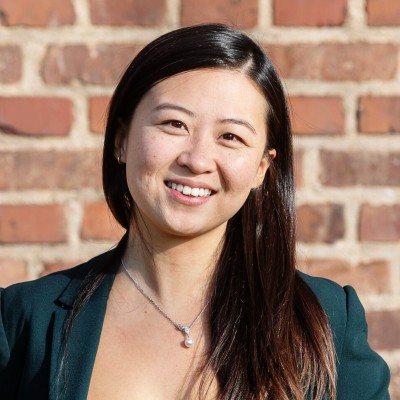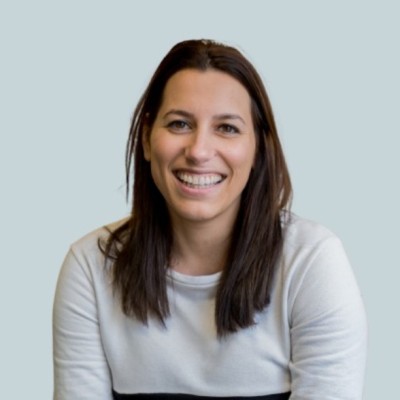"You Ask, We Answer" – brought to you by Carbonfact's Head of Science. Each week Laurent Vandepaer answers one of your questions about sustainable materials, manufacturing impact, and energy transition in the apparel and footwear industry.
Before joining Carbonfact, Laurent led the integration of LCA into the sustainability and innovation efforts at On and performed LCA for other brands like Arc'teryx. Laurent also worked for several years in research with a PhD focusing on the deployment of LCA at a large scale.
Question: What should we consider when assessing the carbon impact of wool production?
Asked by the Head of Sustainability from an apparel brand
Wool is a widely used, versatile fiber found in everything from sweaters to suits. As the most common animal fiber in the fashion industry, sheep wool made up 1% of the global fiber market in 2022. However, wool production comes with a significant environmental cost. The animal fiber industry produces around 35 million tonnes of CO2e annually, with sheep wool contributing to nearly 98% of this total.
What are the main emissions during the production of wool fiber?
Up to 75% of wool’s environmental impact comes from the sheep themselves. The major contributors are methane and nitrous oxide—two powerful greenhouse gases.
Methane, emitted by sheep due to enteric fermentation in the sheep’s digestive system, is 28-34 times more potent than carbon dioxide in terms of global warming potential. Did you know that a single sheep can produce over 30 liters of methane each day?
Nitrous oxide comes from the nitrogen in sheep’s dung and urine, while the rest of the emissions come from sheep food, the fuel used in farm vehicles, and the energy used during shearing.
Here are some anonymized examples from our customers who use wool, highlighting the significant impact it can have on a product's overall carbon footprint:
- Brand 1: Although wool makes up only 9.7% of the total product weight, it is responsible for 50% of their total Scope 3 emissions (CO2eq).
- Brand 2: With wool constituting just 3.6% of the total product weight, it contributes to 35% of their Scope 3 emissions (CO2eq).
- Brand 3: Wool represents 4.2% of the product weight yet accounts for 38.2% of their total emissions (CO2eq).
.png?width=1644&height=940&name=Breakdown%20of%20Final%20Product%20Impact%20(1).png)
Wool LCA review: The latest insights
Earlier this summer, it was reported that the EF 3.1 datasets for wool production had significantly higher climate change impacts compared to other studies. Recently, the EU Commission acknowledged an error in the EF 3.1 calculations and is working on a correction. However, currently it is still under review, as the updated datasets must go through several organizations for correction and review, and are not yet available.
In the meantime, Carbonfact is using the Ecoinvent dataset for wool production, which is more closely aligned with existing literature on wool life cycle assessments (LCA). The dataset represents 1 kg of raw, unwashed wool directly from the sheep, followed by the scouring (washing) and carding (fiber alignment) processes.

Scouring and carding: Interesting details
- Scouring (washing wool to remove grease and dirt) - in the data that we sourced - requires 1.398 kg of raw wool to produce 1 kg of clean wool, contributing 3.50 kg CO₂-eq per kg of pre-carded wool. The largest contributor to this is steam produced from natural gas.
- Carding (aligning and cleaning fibers) - in the data that we sourced - has a climate change impact of 1.94 kg CO₂-eq per kg of carded wool, driven by steam, electricity, and other inputs like oil-based lubricants and packaging.

Allocation of environmental impact in wool production
Sheep farming produces more than just wool—meat, milk, lanolin, and manure are also valuable products. To assess the environmental impact fairly, Life Cycle Assessments (LCAs) need to distribute the emissions of sheep farming practically among its different products to reflect their contributions as accurately as possible. This process, called “allocation”, plays a crucial role in determining the outcomes of LCAs for wool production.
Based on PEFCR (Product Environmental Footprint Category Rules), 23.6% of emissions are assigned to wool, 73.8% to milk, and 2.5% to meat. The PEFCR guideline is based on the biophysical allocation method, which means that the environmental impact of wool production is allocated based on the amount of protein in the wool. Other sources might use an economic allocation leading to important variations in the results.
How to estimate the carbon footprint of wool
A large portion of wool’s environmental footprint occurs before the wool leaves the farm.
Over 80% of the climate change, eutrophication, and land use impacts happen during the cradle-to-farm-gate stage.
Some critical factors to consider in wool’s carbon footprint include:
- Yield: Different sheep breeds produce varying quantities and qualities of wool. For instance, Merino sheep produce fine wool, while Lincoln sheep provide coarser wool. Wool yield has a direct effect on the carbon footprint per kg of wool. For example, The EF 3.1 database assumes that the average sheep in Australia produces 6-7 kg of wool per year.
- Manure Management: How manure is handled plays a key role in the release of methane and nitrous oxide. The amount of nitrogen in manure also varies by region, further affecting emissions. For example, manure in Oceania and Sub-Saharan Africa has different amounts of nitrogen: 1.13 kg N/1000 kg animal/day in Oceania and 1.17 kg N/1000 kg animal/day in Sub-Saharan Africa.
- Feed Production: The type and amount of feed sheep consume contribute to the environmental impact. Sheep can graze or be fed crops like cereals and brassicas, with feed type influencing wool’s carbon footprint.
- Enteric emissions: methane released during sheep digestion, contributing significantly to wool’s carbon footprint due to the potency of methane as a greenhouse gas.
Lower impact alternatives to conventional wool
Regenerative wool
Regenerative land management has the potential to lower the climate impact of animal fibers while boosting biodiversity, improving water quality, and enhancing soil health. To the best of our knowledge, however, there are currently no official LCA studies to quantify the exact environmental savings.
For fashion brands, finding a wool supplier fully committed to regenerative practices can be challenging—but it's not impossible. Allbirds, for example, is set to launch the world’s first net-zero carbon shoe, made from merino wool sourced from Lake Hawea Station in New Zealand, a farm that has undertaken comprehensive regenerative land management practices.

At Lake Hawea Station, key regenerative practices include the adoption of renewable energy through solar and hydro power, with plans to phase out fossil fuel-powered vehicles. The station is also trialing methane reduction techniques using seaweed-based supplements to lower emissions from sheep. Additionally, they focus on soil health improvement by implementing regenerative farming techniques, completing nutrient budgets, and using organic-based fertilizers to enhance soil quality.
Wool recycling
A recent study conducted by researchers from the University of Leeds and Italian textile company Manteco offers promising results for lower-impact recycled wool alternatives to virgin wool. The research focused on the closed-loop mechanical recycling of post-consumer wool, using Manteco’s MWool® process, an industrial-scale dry mechanical recycling method. Here are the main findings:
- Potential for Multi-Recycling: The study found that wool can be recycled up to six times through the woollen spinning process, provided the fibers are at least 20 mm long.
- Fiber Strength and Quality Retention: Recycled wool retained over 92% of their tensile strength after the mechanical recycling process, confirming that the fibers remain strong and durable. This means that recycled wool fabrics can continue to meet the high performance and quality standards.
- Shorter Fibers Perform Better: Shorter fibers, such as those found in merino wool, showed particularly high recyclability, retaining up to 98% of their original length. This makes them ideal candidates for multiple recycling cycles, preserving their ability to be respun into new, high-quality yarns.
- Reduced carbon footprint: The MWool® production process, an example of an industrial-scale mechanical wool recycling system, reduces the carbon footprint of wool fibre to 0.1-0.9 kg CO2 eq, compared to 10-103 kg CO2 eq for generic virgin wool. This substantial reduction is due to the fact that mechanical recycling avoids the energy-intensive stages of virgin wool production, such as sheep rearing, cleaning and processing of raw wool.
Although it’s a more sustainable option, recycled wool has some drawbacks, including shorter fibers, reduced strength, limited color options, and a rougher texture, which is often less favored by designers. Read more about Manteco fibers carbon footprint here.
Carbonfact’s approach to recycled materials
In our default modeling approach for recycled materials, we use the "cut-off" approach. This method considers only the recycling process (e.g., grinding, cleaning) and excludes the environmental impacts from the virgin material’s earlier life (like extraction or farming). This makes recycled materials appear to have lower impact scores, as the burden is placed on the material’s primary life cycle.
We chose the cut-off method for its simplicity, ease of understanding, and alignment with standards like ISO 14040-44 and PAS 2050. However, as French eco-score and PEFCR are shifting towards the circular footprint formula (CFF)—which includes part of the virgin material’s impact—we’ve also implemented CFF for some clients and can offer this option based on your needs.
About Carbonfact
Carbonfact is Sustainability software, built specifically for apparel and footwear brands as well as manufacturers to measure the environmental impact of their products and take actionable steps to reduce their footprint. Our Product Impact Simulation tool enables you to run what-if scenarios on a product level, where you can experiment with different material preparation techniques, suppliers, renewable electricity share, or transportation methods, and build concrete company-level decarbonization scenarios.
Do you have questions about sustainable practices, manufacturing impacts, or energy transitions in the apparel and footwear industry? We'd love to hear from you! Comment, send us a DM on Linkedin or email: youaskweanswer@carbonfact.com


-1.jpg?width=203&height=203&name=430471923_947159710328078_7998316763082046126_n%20(1)-1.jpg)



![[Guide] Carbon accounting for fashion, textile, apparel, and footwear companies](https://www.carbonfact.com/hs-fs/hubfs/CA%20-%20Opt1.png?width=600&name=CA%20-%20Opt1.png)
 Angie Wu
Angie Wu

 Lidia Lüttin
Lidia Lüttin
